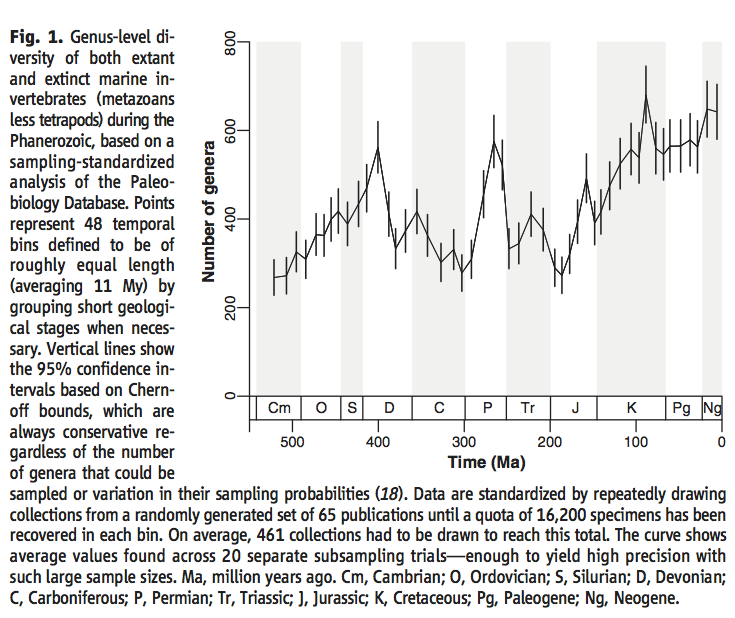Phanerozoic trends in the global diversity of marine invertebrates
Alroy, J., Aberhan, M., Bottjer, D., Foote, M., Fürsich, F. T., Harries, P. J., Hendy, A. J. W., Holland, S., Ivany, L. C., Kiessling, W., Kosnik, M. A., Marshall, C. R., McGowan, A. J., Miller, A., Olszewski, T. D., Patzkowsky, M., Peters, S. E., Villier, L., Wagner, P., Bonuso, N., Borkow, P. S., Brenneis, B., Clapham, M. E., Fall, L. M., Ferguson, C. A., Hanson, V. L., Krug, A. Z., Layou, K. M., Leckey, E. H., Nürnberg, S., Powers, C. M., Sessa, J. A., Simpson, C., Tomašových, A. & Visaggi, C. C. 2008 Phanerozoic trends in the global diversity of marine invertebrates. Science 321(5885), 97-100. pdf
It has previously been thought that there was a steep Cretaceous and Cenozoic radiation of marine invertebrates. This pattern can be replicated with a new data set of fossil occurrences representing 3.5 million specimens, but only when older analytical protocols are used. Moreover, analyses that employ sampling standardization and more robust counting methods show a modest rise in diversity with no clear trend after the mid-Cretaceous. Globally, locally, and at both high and low latitudes, diversity was less than twice as high in the Neogene as in the mid-Paleozoic. The ratio of global to local richness has changed little, and a latitudinal diversity gradient was present in the early Paleozoic.
